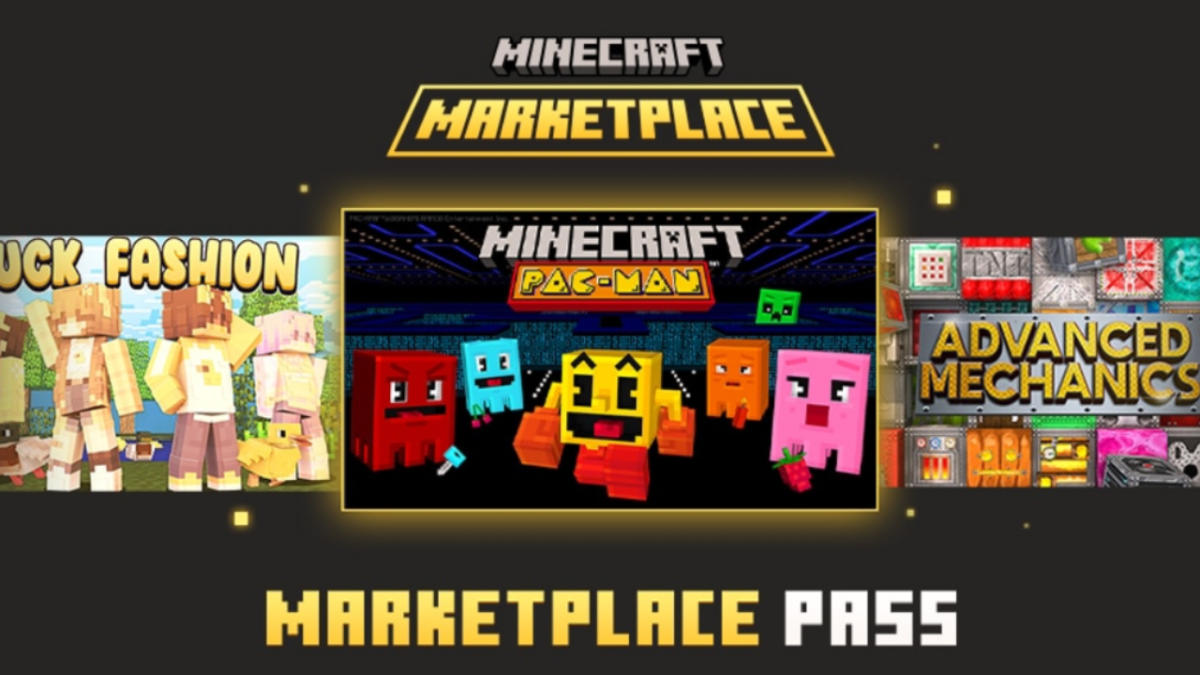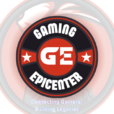Creating a game is a dream for many, and when it comes to crafting something as iconic as Minecraft, the challenge becomes even more exhilarating. This article delves into the story of developing a Minecraft-inspired game using contemporary tools like Unity and ChatGPT. From the initial concept to overcoming technical hurdles, this journey showcases the dedication and creativity required to bring a virtual world to life. So lets dive into The Journey of Creating a Minecraft-Inspired Game Using ChatGPT
Table of Contents
ToggleThe Journey of Creating a Minecraft-Inspired Game Using ChatGPT
Creating a game inspired by Minecraft is an exciting endeavor that combines creativity, programming, and design. Minecraft, developed by Mojang Studios, has captivated millions with its blocky graphics and endless possibilities for exploration and creation.
As a developer, you might find yourself inspired by this iconic game and eager to create your own version. In this article, we will explore the journey of developing a Minecraft-inspired game using ChatGPT, an AI language model that can assist in various stages of game development. We will cover everything from initial concepts to final touches, providing insights and tips along the way. Read more such articles on Gamingepicenter.com
Understanding the Basics of Game Development
Before diving into the specifics of creating a Minecraft-inspired game, it’s essential to understand the basics of game development. Game development involves several key components, including:
-
Game Design: This is the conceptual phase where you outline the game’s mechanics, story, and overall experience you want to create.
-
Programming: Writing the code that makes the game function. This includes everything from character movement to game physics.
-
Art and Graphics: Creating the visual elements of the game, including characters, environments, and user interfaces.
-
Sound Design: Incorporating sound effects and music to enhance the gaming experience.
-
Testing and Debugging: Ensuring that the game runs smoothly and fixing any issues that arise.
Conceptualizing the Game

The idea for creating a Minecraft-inspired game originated from a desire to recreate the nostalgia of building with blocks. Markus Persson, popularly known as Notch, envisioned a game where players could construct anything without limitations, reminiscent of his childhood experiences with building blocks. This simple yet powerful concept laid the foundation for what would become a groundbreaking game.
Choosing the Right Tools
To bring this vision to life, modern tools like Unity and ChatGPT were chosen for their versatility and capabilities. Unity’s robust game development platform allowed for intricate design and real-time rendering, while ChatGPT provided an innovative way to generate scripts and solve coding challenges efficiently.
Using ChatGPT for Game Development
ChatGPT can be an invaluable tool throughout your game development process. Here’s how you can leverage its capabilities:
Idea Generation
When you’re stuck or need fresh ideas, ChatGPT can help generate concepts for game mechanics, character designs, or storylines. For example, you can ask:
“What are some unique crafting recipes that could be included in a Minecraft-inspired game?”
“Can you suggest interesting biomes and their features for my game?”
By interacting with ChatGPT, you can explore a wide range of ideas that can inspire your game’s development.
Writing Code
While you may not be an expert programmer, ChatGPT can assist you in writing code snippets for various game functionalities. For instance, if you need help with player movement mechanics, you can ask:
“Can you provide a simple JavaScript code snippet for player movement in a 2D game?”
ChatGPT can generate code examples that you can adapt and integrate into your game. This can save you time and help you learn as you go.
Story and Dialogue Creation
If your game includes a narrative or character interactions, ChatGPT can help you craft compelling dialogue and story arcs. You might ask:
“What dialogue can I use for a character who is guiding the player through the game?”
“Can you suggest a backstory for the main character?”
By utilizing ChatGPT for writing, you can enhance the depth of your game’s narrative.
Starting the Development
The initial phase involved setting up the development environment and writing basic code to generate blocks and a simple world. Despite the simplicity, this stage was crucial for establishing the fundamental mechanics of the game.
Designing the Game World
With your ideas and code snippets in hand, it’s time to start designing your game world. This process involves creating the environments, characters, and objects that players will interact with. Here are some steps to consider:
Creating the Environment
Choose a Game Engine: Select a game engine that suits your needs. Popular options for 2D games include Unity, Godot, and Construct. For 3D games, Unity and Unreal Engine are excellent choices.
Build the World: Start designing your game world using the tools provided by your chosen game engine. Create different biomes, landscapes, and structures that players can explore.
Implement Terrain Generation: If you want to mimic Minecraft’s procedural generation, consider implementing algorithms that create terrain dynamically. This can add an element of surprise and exploration to your game.
Facing Initial Challenges
No development journey is without its hurdles. Early on, the project faced significant challenges, including bugs and performance issues. The game would frequently crash, and entire worlds would disappear, leading to moments of doubt and frustration.
Breakthrough Moments
Persistence paid off as key breakthroughs were achieved. By refining the code and addressing performance issues, the game began to take shape. These moments of progress were both rewarding and motivating, driving further development.
Implementing Multiplayer Features
Adding multiplayer functionality was a game-changer. Allowing players to build and explore together added a new dimension of enjoyment and collaboration. This feature significantly enhanced the game’s appeal and replayability.
Utilizing ChatGPT for Coding
ChatGPT played a pivotal role in streamlining the coding process. By generating scripts for various game elements, it saved considerable time and effort. Whether it was terrain generation or fixing bugs, ChatGPT proved to be an invaluable resource.
Enhancing Graphics
Improving the game’s graphics was essential for creating an immersive experience. By incorporating modern textures and optimizing rendering processes, the visual appeal and performance of the game were significantly enhanced.
Terrain Generation Techniques
Efficient terrain generation was a complex yet crucial task. Initially, using cubes for terrain caused performance issues. By instructing ChatGPT to create scripts that generated chunk-based terrain, similar to Minecraft, these issues were resolved, resulting in a more seamless and engaging environment.
Inventory System
An intuitive inventory system was developed to allow players to manage their resources effectively. By leveraging ChatGPT to generate coding for the inventory, it was integrated smoothly, enabling players to store and place blocks effortlessly.
User Interface Development
Creating a user-friendly interface was paramount. The UI needed to be intuitive yet comprehensive, providing players with easy access to their inventory and game controls. ChatGPT assisted in coding the UI elements, ensuring a polished and functional design.
Adding Sound and Visual Effects
Incorporating sound effects and visual particles added depth and realism to the game. These elements were carefully integrated to enhance the overall gameplay experience, making the virtual world more vibrant and interactive.
Mobile Optimization
Adapting the game for mobile platforms was a significant step. Mobile optimization involved adjusting controls and performance to ensure a smooth and enjoyable experience on smaller screens. This expanded the game’s accessibility, allowing more players to join the fun.
Final Touches and Testing
The final phase involved rigorous testing and polishing. Bugs were fixed, performance was optimized, and the game underwent extensive testing to ensure a flawless experience for players. This stage was crucial for delivering a high-quality game.
Testing Your Game
Once you have implemented your game mechanics, it’s crucial to test your game thoroughly. Testing helps identify bugs, balance gameplay, and improve the overall experience. Here are some testing strategies:
Playtesting: Invite friends or fellow developers to play your game and provide feedback. Observe how they interact with the game and note any difficulties they encounter.
Bug Fixing: Address any bugs or glitches that arise during testing. This may involve revisiting your code and making adjustments.
Balancing: Ensure that the game is balanced in terms of difficulty and resource availability. Adjust mechanics as needed based on player feedback.
As you approach the completion of your game, it’s time to focus on polishing and adding final touches. This stage involves:
Graphics and Sound: Enhance the visual and audio elements of your game. Consider adding background music, sound effects, and visual effects to create an immersive experience.
User Interface (UI): Design a clean and intuitive UI that allows players to navigate menus and access their inventory easily.
Marketing and Promotion: Start thinking about how you will promote your game. Create a website, social media pages, and trailers to generate interest.
Launch and Community Feedback
Upon release, the game received an overwhelmingly positive response. Player feedback was instrumental in identifying areas for improvement and potential new features. Engaging with the community helped shape the game’s future updates.
Challenges and Learnings
Reflecting on the development process, numerous challenges were encountered and overcome. Each obstacle provided valuable lessons, contributing to the team’s growth and expertise in game development.
Future Plans for the Game
Looking ahead, the game has exciting plans for future updates. New features, enhancements, and expansions are in the pipeline, promising to keep the community engaged and the game evolving.
Comparing to Minecraft
While the game draws inspiration from Minecraft, it brings its unique elements and innovations. By leveraging modern tools and creative solutions, it stands out as a distinct yet familiar experience.
The Journey of Creating a Minecraft-Inspired Game Using ChatGPT Conclusion
The journey of creating a Minecraft-inspired game using modern tools like Unity and ChatGPT is a testament to innovation and perseverance. From initial challenges to breakthrough moments, this project showcases the potential of combining creativity with cutting-edge technology.
Aspiring game developers can draw inspiration from this journey and continue pushing the boundaries of what’s possible in game development.
The Journey of Creating a Minecraft-Inspired Game Using ChatGPT FAQs
What inspired the creation of this game?
The game was inspired by the nostalgic experience of building with blocks, similar to Minecraft.
Why were Unity and ChatGPT chosen for development?
Unity was chosen for its robust platform capabilities, and ChatGPT for its efficient coding assistance.
What were the major challenges faced during development?
Key challenges included performance issues, bugs, and optimizing terrain generation.
How does the multiplayer feature enhance the game?
Multiplayer functionality allows players to collaborate and build together, significantly increasing the game’s enjoyment and replayability.
What are the future plans for the game?
Future updates will include new features, enhancements, and expansions to keep the game engaging.
How does this game compare to Minecraft?
While inspired by Minecraft, the game incorporates unique elements and modern innovations, offering a distinct experience.
Lorem ipsum dolor sit amet, consectetur adipiscing elit. Ut elit tellus, luctus nec ullamcorper mattis, pulvinar dapibus leo.
